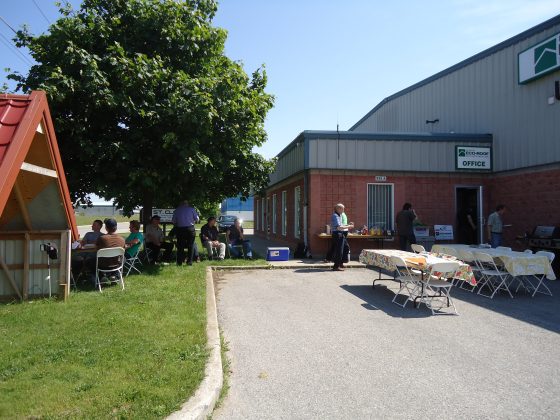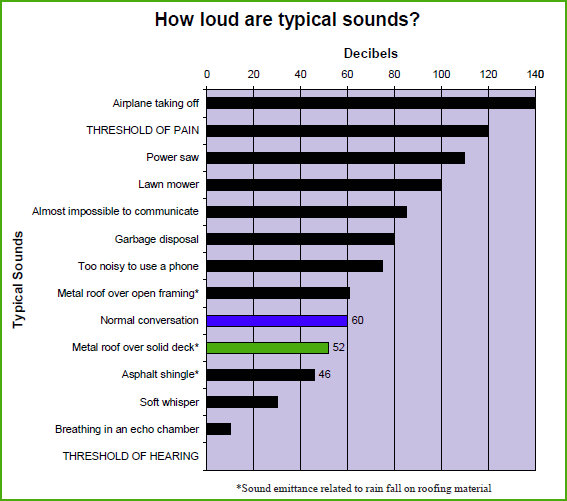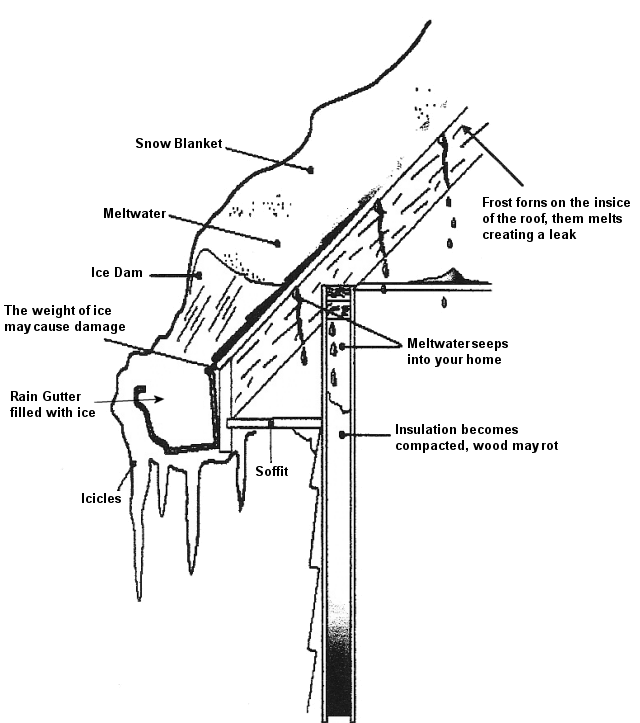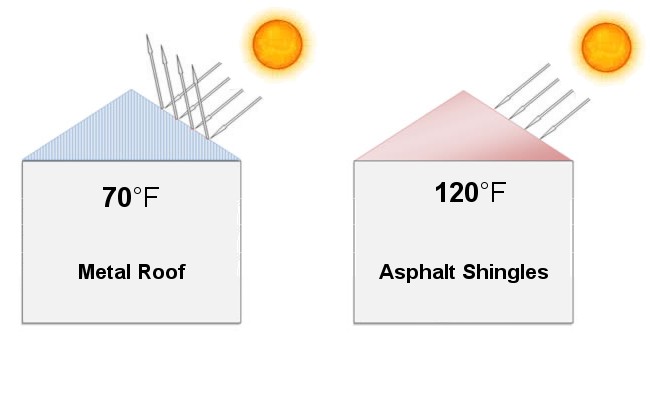Article written by by Lisbeth Tanz and originally posted on October 9, 2009 at Improve Your Home And Garden web site:
http://www.improveyourhomeandgarden.com/5-metal-roof-myths-dispelled
For full article use the link above.
Quick! What’s the hottest trend in residential roofing today? Metal. But first let’s first dispel a few myths about metal roofs:
Myth #1: Metal roofs are hot and don’t insulate the house as well as asphalt shingles.
Truth: Metal roofs actually save money on heating and cooling bills when properly installed. Depending upon the finish of the metal and the net air space created, metal roofs reflect much of the solar radiation typically absorbed by an asphalt roof. The result is a home that stays a more consistent temperature, which means no more wild temperature fluctuations throughout the day.
Myth #2: Metal roofs attract lightning.
Truth: According to the Metal Roof Alliance, a metal roof does not increase the likelihood of lightning striking your home. But if your home was hit by lightning, the metal roof disperses the energy safely throughout the structure. Besides the strike itself, the big concern with a lightning is fire. The great news is, metal roofing isn’t combustible or flammable, so it’s a low-risk and better roofing option where severe weather is a concern.
Myth #3: Metal roofs don’t last as long as asphalt shingles.
Truth: Quality metal roof workmanship warranties come with a 20-year guarantee, unlike asphalt roof warranties that are at the discretion of the contractor, says Tracy J. Scott, owner of Best Metal Roof Period in High Ridge, MO. The key to metal roof longevity, Tracy says, is a comprehensive installation by a master metal roofer. Metal roofs require special skills and knowledge to be installed properly. “Not just anyone can install a metal roof properly,” he says. “It takes at least 4-5 years to become proficient at metal roof installation–and proficient is the minimum standard homeowners should look for when seeking a contractor.”
Myth #4: Metal roofs don’t offer much benefit.
Truth: First, see #1 above. Currently, you can also receive a $1,500 tax credit on most metal roof products and/or installations that meet energy star ratings. Energy Star-qualified roof products can help reduce the amount of air conditioning needed by reducing peak cooling demands by 10%-15%. (You can find out more details about Energy Star requirements from the EPA’s Department of Energy website.)
Myth #5: Metal roofs are cost-prohibitive compared to asphalt roofs.
Truth: Metal roofs may cost more than asphalt shingles up front. However, as petroleum-based product costs go up – and asphalt shingles are petroleum-based – the cost difference is less than it was a few years ago. Typically, you can expect to pay two to four times more for a metal roof. But if you run a pay-back analysis and figure in the annual energy savings in your heating and cooling bills (depending upon the region you live in), plus the $1,500 tax credit, a metal roof can pay for itself in just a few years. Additionally, according to the Metal Roof Alliance, asphalt roofing has a higher lifecycle cost, needing replacement 2 – 4 times as often as metal roofing. And what happens when you claim frequent roof repairs on your homeowners policy? So doing an apples-to-apples replacement roof comparison requires looking at all the costs: homeowner premiums, electrical costs, and warranties. Comparatively, metal roofing can be a “once-a-lifetime” installation.
Below are the six criteria Tracy Scott recommends for homeowners evaluating metal roof contractors. He says they’re best practices that Best Metal Roof Period, his company, adheres to for professional metal roof installations that last the lifetime of the warranty.
- Be sure contractors you request bids from are metal roofing contractor experts.
- Closely related is the qualification process. How long have they been in business? How many years have they installed metal roofs? What trade associations do they belong to? What certifications do they have?
- Talk to the installer or the project foreman who will actually do your roofing job.
- Get at least 3 estimates.
- Ask for and check references.
- Demand a minimum 20-year, transferable workmanship warranty (material warranties last from 30-50 years).
In sports you often hear that the best defense is a good offense. This is especially true in the home improvement industry. “Do your homework before you spend that $15,000,” Tracy says, which is the average cost of a metal roof in St. Louis. “A metal roof will help your home appraise for up to 3% more if you don’t plan to sell right away. That’s a pretty sound investment.” His final advice? Arm yourself with knowledge so that when you talk metal roofing, you understand the language, terminology and requirements necessary for a quality installation. Don’t be in a hurry to get it done. You may be able to put up new asphalt shingles fast, but, “Just like driving a car, speed kills.”





